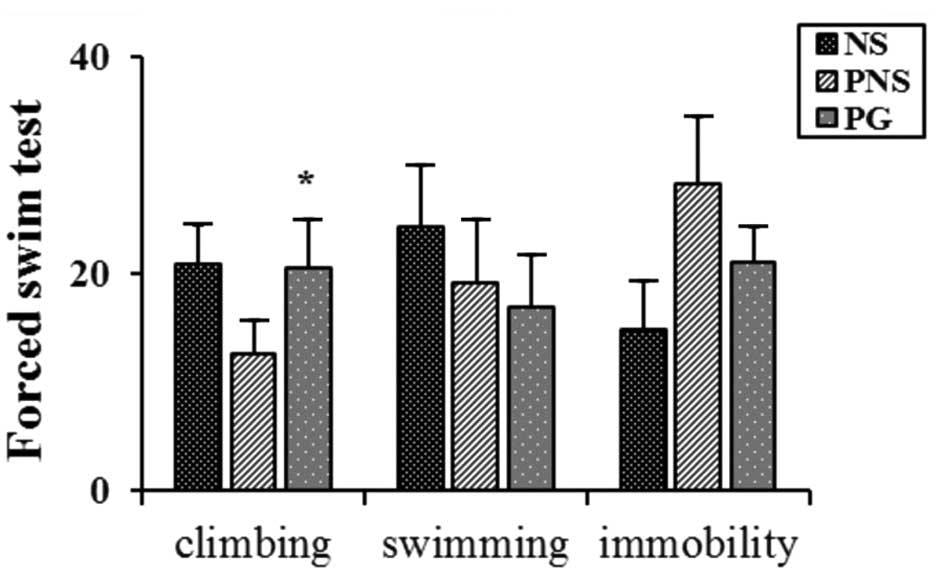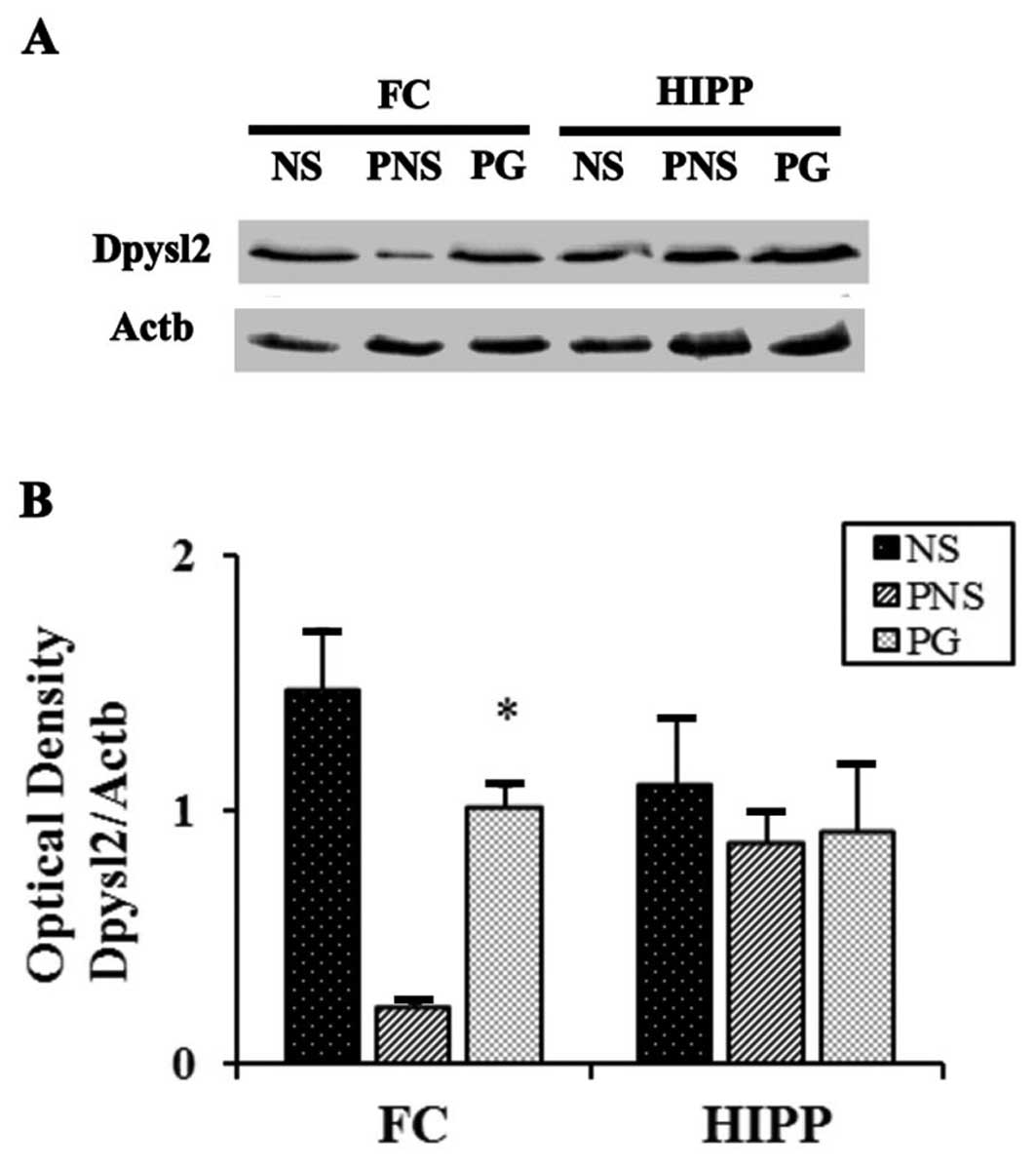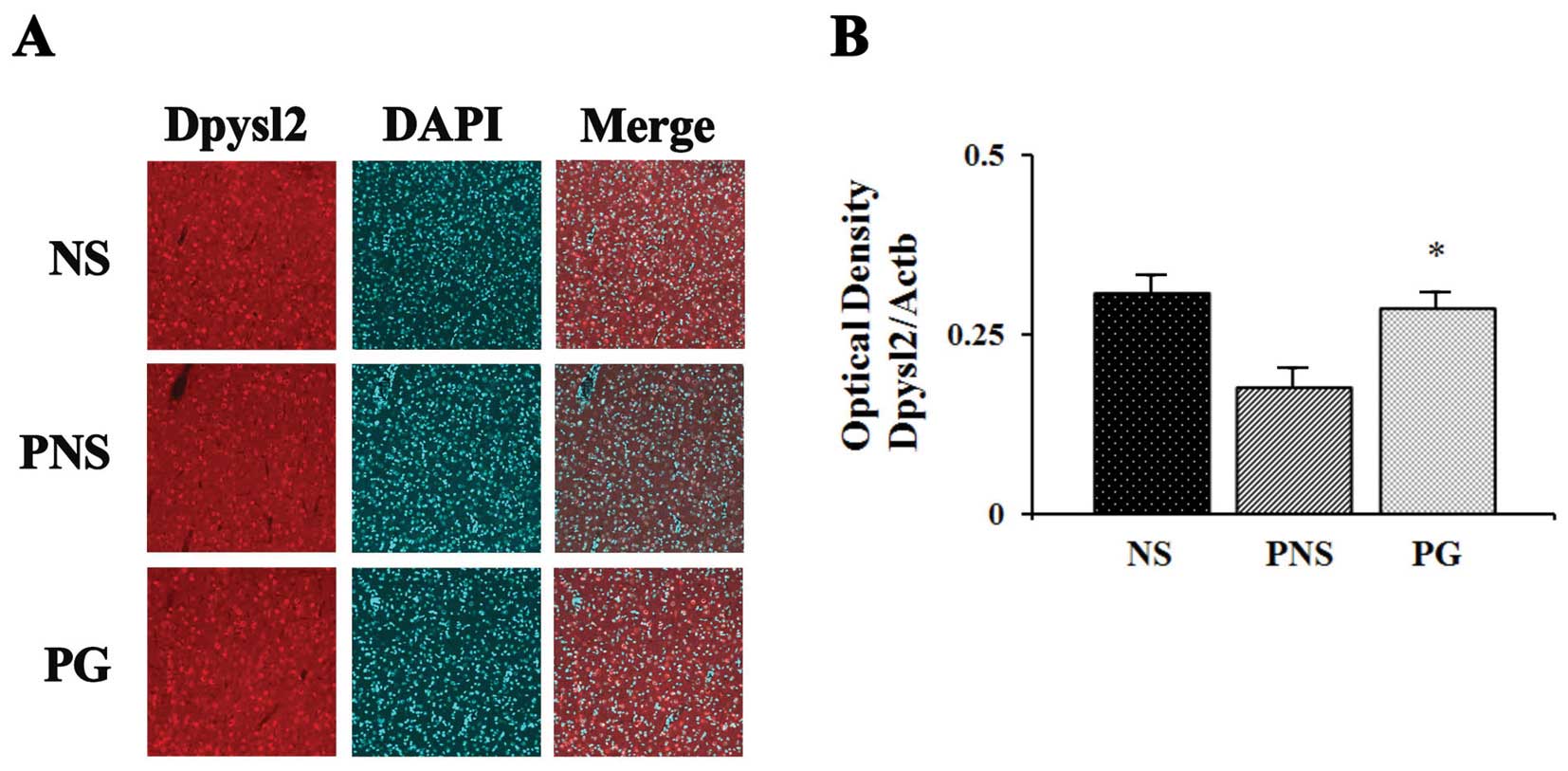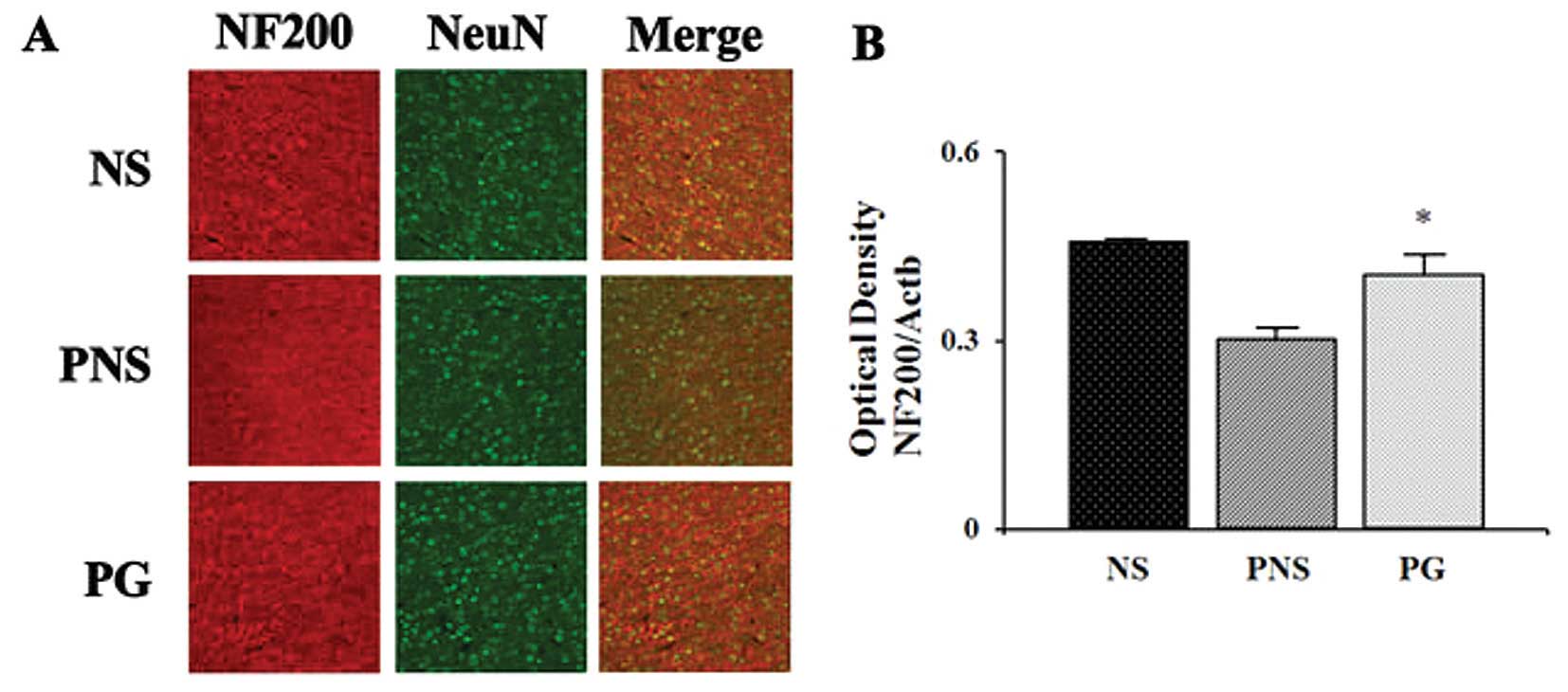|
1
|
Brown AS1, van Os JC, et al: Further
evidence of relation between prenatal famine and major affective
disorder. Am J Psychiatry. 157:190–195. 2000. View Article : Google Scholar : PubMed/NCBI
|
|
2
|
Sullivan PF: The genetics of
schizophrenia. PLoS Med. 2:e2122005. View Article : Google Scholar : PubMed/NCBI
|
|
3
|
Huttunen MO and Niskanen P: Prenatal loss
of father and psychiatric disorder. Arch Gen Psychiatry.
35:429–431. 1978. View Article : Google Scholar : PubMed/NCBI
|
|
4
|
King M, Nazroo J, Weich S, et al:
Psychotic symptoms in the general population of England: a
comparison of ethnic groups (The EMPIRIC study). Soc Psychiatry
Psychiatr Epidemiol. 40:375–381. 2005. View Article : Google Scholar : PubMed/NCBI
|
|
5
|
King S, Laplante D and Joober R:
Understanding putative risk factors for schizophrenia:
retrospective and prospective studies. J Psychiatry Neurosci.
30:342–348. 2005.PubMed/NCBI
|
|
6
|
Lim C, Chong SA and Keefe R: Psychosocial
factors in the neurobiology of schizophrenia: a selective review.
Ann Acad Med Singapore. 38:402–406. 2009.PubMed/NCBI
|
|
7
|
Imamura Y, Nakane Y, Ohta Y and Kondo H:
Lifetime prevalence of schizophrenia among individuals prenatally
exposed to atomic bomb radiation in Nagasaki City. Acta Psychiatr
Scand. 100:344–349. 1999. View Article : Google Scholar : PubMed/NCBI
|
|
8
|
Meyer U and Feldon J: Epidemiology-driven
neurodevelopmental animal models of schizophrenia. Prog Neurobiol.
90:285–326. 2010. View Article : Google Scholar
|
|
9
|
Weinstock M: The long-term behavioural
consequences of prenatal stress. Neurosci Biobehav Rev.
32:1073–1086. 2008. View Article : Google Scholar : PubMed/NCBI
|
|
10
|
Seckl JR: Prenatal glucocorticoids and
long-term programming. Eur J Endocrinol. 151:U49–U62. 2004.
View Article : Google Scholar : PubMed/NCBI
|
|
11
|
de Kloet ER, Sibug RM, Helmerhorst FM and
Schmidt MV: Stress, genes and the mechanism of programming the
brain for later life. Neurosci Biobehav Rev. 29:271–281. 2005.
View Article : Google Scholar : PubMed/NCBI
|
|
12
|
Beydoun H and Saftlas AF: Physical and
mental health outcomes of prenatal maternal stress in human and
animal studies: a review of recent evidence. Paediatr Perinat
Epidemiol. 22:438–466. 2008. View Article : Google Scholar : PubMed/NCBI
|
|
13
|
Lee PR, Brady DL, Shapiro RA, et al:
Prenatal stress generates deficits in rat social behavior: reversal
by oxytocin. Brain Res. 1156:152–167. 2007. View Article : Google Scholar : PubMed/NCBI
|
|
14
|
Kinnunen AK, Koenig JI and Bilbe G:
Repeated variable prenatal stress alters pre- and postsynaptic gene
expression in the rat frontal pole. J Neurochem. 86:736–748. 2003.
View Article : Google Scholar : PubMed/NCBI
|
|
15
|
Koenig JI, Elmer GI, Shepard PD, et al:
Stress during gestation produces alterations in adult rat behavior:
relevance to schizophrenia. Soc Neurosci abs. 495.6. 2002.
|
|
16
|
Koenig JI, Elmer GI, Shepard PD, et al:
Prenatal exposure to a repeated variable stress paradigm elicits
behavioral and neuroendocrinological changes in the adult
offspring: potential relevance to schizophrenia. Behav Brain Res.
156:251–261. 2005. View Article : Google Scholar
|
|
17
|
Hayashi A, Nagaoka M, Yamada K, et al:
Maternal stress induces synaptic loss and developmental
disabilities of offspring. Int J Dev Neurosci. 16:209–216. 1998.
View Article : Google Scholar : PubMed/NCBI
|
|
18
|
Lemaire V, Koehl M, Moal LM and Abrous DN:
Prenatal stress produces learning deficits associated with an
inhibition of neurogenesis in the hippocampus. Proc Natl Acad Sci
USA. 97:11032–11037. 2000. View Article : Google Scholar : PubMed/NCBI
|
|
19
|
Martínez-Téllez RI, Hernández-Torres E,
Gamboa C and Flores G: Prenatal stress alters spine density and
dendritic length of nucleus accumbens and hippocampus neurons in
rat offspring. Synapse. 63:794–804. 2009. View Article : Google Scholar : PubMed/NCBI
|
|
20
|
Van den Hove DL, Kenis G, Brass A, et al:
Vulnerability versus resilience to prenatal stress in male and
female rats; implications from gene expression profiles in the
hippocampus and frontal cortex. Eur Neuropsychopharmacol.
23:1226–1246. 2012. View Article : Google Scholar : PubMed/NCBI
|
|
21
|
Mairesse J, Vercoutter-Edouart AS,
Marrocco J, et al: Proteomic characterization in the hippocampus of
prenatally stressed rats. J Proteomics. 75:1764–1770. 2012.
View Article : Google Scholar : PubMed/NCBI
|
|
22
|
Lee HY, Joo J, Nah SS, et al: Changes in
Dpysl2 expression are associated with prenatally stressed rat
offspring and susceptibility to schizophrenia in humans. Int J Mol
Med. (In press).
|
|
23
|
Vogler BK, Pittler MH and Ernst E: The
efficacy of ginseng. A systematic review of randomised clinical
trials. Eur J Clin Pharmacol. 55:567–575. 1999. View Article : Google Scholar : PubMed/NCBI
|
|
24
|
Dan B and Andrew G: Chinese Herbal
Medicine. 8th edition. Eastland Press; Seattle, WA: pp. 110–113.
1993
|
|
25
|
Helms S: Cancer prevention and
therapeutics: Panax ginseng. Altern Med Rev. 9:259–274.
2004.PubMed/NCBI
|
|
26
|
Park JD, Rhee DK and Lee YH: Biological
activities and chemistry of saponins from Panax ginseng C. A.
Meyer. Phytochem Rev. 4:159–175. 2005. View Article : Google Scholar
|
|
27
|
Qi LW, Wang CZ and Yuan CS: Isolation and
analysis of ginseng: advances and challenges. Nat Prod Rep.
28:467–495. 2011. View Article : Google Scholar : PubMed/NCBI
|
|
28
|
Chen EY and Hui CL: HT1001, a proprietary
North American ginseng extract, improves working memory in
schizophrenia: a double-blind, placebo-controlled study. Phytother
Res. 26:1166–1172. 2012. View
Article : Google Scholar : PubMed/NCBI
|
|
29
|
Dulawa SC, Holick KA, Gundersen B and Hen
R: Effects of chronic fluoxetine in animal models of anxiety and
depression. Neuropsychopharmacology. 29:1321–1330. 2004. View Article : Google Scholar : PubMed/NCBI
|
|
30
|
Schroeder M, Sultany T and Weller A:
Prenatal stress effects on emotion regulation differ by genotype
and sex in prepubertal rats. Dev Psychobiol. 55:176–192. 2013.
View Article : Google Scholar
|
|
31
|
Axel B, Brigitte P, Helmut S, et al:
Ketamin-induced changes in tar behavior: a possible animal model of
schizophrenia. Prog Neuropsychopharmacol Biol Psychiatry.
27:687–700. 2003. View Article : Google Scholar
|
|
32
|
Joo J, Lee S, Nah SS, et al: Lasp1 is
down-regulated in NMDA receptor antagonist-treated mice and
implicated in human schizophrenia susceptibility. J Psychiatr Res.
47:105–112. 2013. View Article : Google Scholar
|
|
33
|
Goshima Y, Nakamura F, Strittmatter P and
Strittmatter SM: Collapsin-induced growth cone collapse mediated by
an intracellular protein related to UNC-33. Nature. 376:509–514.
1995. View
Article : Google Scholar : PubMed/NCBI
|
|
34
|
Attele AS, Wu JA and Yuan CS: Ginseng
pharmacology: multiple constituents and multiple actions. Biochem
Pharmacol. 58:1685–1693. 1999. View Article : Google Scholar : PubMed/NCBI
|
|
35
|
Bahrke MS and Morgan WR: Evaluation of the
ergogenic properties of ginseng: an update. Sports Med. 29:113–133.
2000. View Article : Google Scholar : PubMed/NCBI
|
|
36
|
Radad K, Gille G, Liu L and Rausch WD: Use
of ginseng in medicine with emphasis on neurodegenerative
disorders. J Pharmacol Sci. 100:175–186. 2006. View Article : Google Scholar : PubMed/NCBI
|
|
37
|
Liu CX and Xiao PG: Recent advances on
ginseng research in China. J Ethnopharmacol. 36:27–38. 1992.
View Article : Google Scholar : PubMed/NCBI
|
|
38
|
Baek NI, Kim DS, Lee YH, et al:
Ginsenoside Rh4, a genuine dammarane glycosidefrom Korean red
ginseng. Planta Med. 62:86–87. 1996. View Article : Google Scholar : PubMed/NCBI
|
|
39
|
Christensen LP: Ginsenosides chemistry,
biosynthesis, analysis and potential health effects. Adv Food Nutr
Res. 55:1–99. 2009. View Article : Google Scholar
|
|
40
|
Kim DH, Moon YS, Jung JS, et al: Effects
of ginseng saponin administered intraperitoneally on the
hypothalamo-pituitary-adrenal axis in mice. Neurosci Lett.
343:62–66. 2003. View Article : Google Scholar : PubMed/NCBI
|
|
41
|
Fugh-Berman A and Cott JM: Dietary
supplements and natural products as psychotherapeutic agents.
Psychosom Med. 61:712–728. 1999. View Article : Google Scholar : PubMed/NCBI
|
|
42
|
Radad K, Gille G, Moldzio R, et al:
Ginsenosides Rb1 and Rg1 effects on mesencephalic dopaminergic
cells stressed with glutamate. Brain Res. 1021:41–53. 2004.
View Article : Google Scholar : PubMed/NCBI
|
|
43
|
Park EK, Choo MK, Oh JK, et al:
Ginsenoside Rh2 reduces ischemic brain injury in rats. Biol Pharm
Bull. 27:433–436. 2004. View Article : Google Scholar : PubMed/NCBI
|
|
44
|
Ji YC, Kim YB, Park SW, et al:
Neuroprotective effect of ginseng total saponins in experimental
traumatic brain injury. J Korean Med Sci. 20:291–296. 2005.
View Article : Google Scholar : PubMed/NCBI
|
|
45
|
Van Kampen J, Robertson H, Hagg T and
Drobitch R: Neuroprotective actions of the ginseng extract G115 in
two rodent models of Parkinson’s disease. Exp Neurol. 184:521–529.
2003. View Article : Google Scholar : PubMed/NCBI
|
|
46
|
Dang H, Chen Y, Liu X, et al:
Antidepressant effects of ginseng total saponins in the forced
swimming test and chronic mild stress models of depression. Prog
Neuropsychopharmacol Biol Psychiatry. 33:1417–1424. 2009.
View Article : Google Scholar : PubMed/NCBI
|
|
47
|
Cui J, Jiang L and Xiang H: Ginsenoside
Rb3 exerts antidepressant-like effects in several animal models. J
Psychopharmacol. 697–713. 2011.PubMed/NCBI
|
|
48
|
Shen L and Zhang J: Ginsenoside Rg1
increases ischemia-induced cell proliferation and survival in the
dentategyrus of adult gerbils. Neurosci Lett. 344:1–4. 2003.
View Article : Google Scholar : PubMed/NCBI
|
|
49
|
Borrell J, Vela JM, Arevalo-Martin A, et
al: Prenatal immune challenge disrupts sensorimotor gating in adult
rats. Implications for theetiopathogenesis of schizophrenia.
Neuropsychopharmacology. 26:204–215. 2002. View Article : Google Scholar : PubMed/NCBI
|
|
50
|
Zuckerman L, Rehavi M, Nachman R and
Weiner I: Immune activation during pregnancy in rats leads to a
postpubertal emergence of disrupted latent inhibition, dopaminergic
hyperfunction, and altered limbic morphology in the offspring: a
novel neurodevelopmental model of schizophrenia.
Neuropsychopharmacology. 28:1778–1789. 2003. View Article : Google Scholar : PubMed/NCBI
|
|
51
|
Palmer AA, Printz DJ, Butler PD, et al:
Prenatal protein deprivation in rats induces changes in prepulse
inhibition and NMDA receptor binding. Brain Res. 996:193–201. 2004.
View Article : Google Scholar
|
|
52
|
Kelley ME, Gilbertson M, Mouton A and van
Kammen DP: Deterioration in premorbid functioning in schizophrenia:
a developmental model of negative symptoms in drug-free patients.
Am J Psychiatry. 149:1543–1548. 1992.PubMed/NCBI
|
|
53
|
Moller P and Husby R: The initial prodrome
in schizophrenia: searching for naturalistic core dimensions of
experience and behavior. Schizophr Bull. 26:217–232. 2000.
View Article : Google Scholar
|
|
54
|
Cornblatt BA: The New York high risk
project to the Hillside recognition and prevention (RAP) program.
Am J Med Genet. 114:956–966. 2002. View Article : Google Scholar : PubMed/NCBI
|
|
55
|
Weinstock M: Alterations induced by
gestational stress in brain morphology and behavior of the
offspring. Prog Neurobiol. 65:427–451. 2001. View Article : Google Scholar : PubMed/NCBI
|
|
56
|
Arimura N, Menager C, Fukata Y and
Kaibuchi K: Role of CRMP-2 in neuronal polarity. J Neurobiol.
58:34–47. 2004. View Article : Google Scholar
|
|
57
|
Lin PC, Chan PM, Hall C and Manser E:
Collapsin response mediator proteins (CRMPs) are a new class of
microtubule-associated protein (MAP) that selectively interacts
with assembled microtubules via a taxol-sensitive binding
interaction. J Biol Chem. 286:41466–41478. 2011. View Article : Google Scholar : PubMed/NCBI
|
|
58
|
Higurashi M, Iketani M, Takei K, et al:
Localized role of CRMP1 and CRMP2 in neurite outgrowth and growth
cone steering. Dev Neurobiol. 72:1528–1540. 2012. View Article : Google Scholar : PubMed/NCBI
|
|
59
|
Brittain JM, Piekarz AD, Wang Y, et al: An
atypical role for collapsin response mediator protein 2 (CRMP-2) in
neurotransmitter release via interaction with presynaptic
voltage-gated calcium channels. J Biol Chem. 284:31375–1390. 2009.
View Article : Google Scholar : PubMed/NCBI
|
|
60
|
Johnston-Wilson NL, Sims CD, Hofmann JP,
et al: Disease-specific alterations in frontal cortex brain
proteins in schizophrenia, bipolar disorder, and major depressive
disorder. The Stanley Neuropathology Consortium. Mol Psychiatry.
5:142–149. 2000. View Article : Google Scholar : PubMed/NCBI
|
|
61
|
Cassereau J, Nicolas G, Lonchampt P, et
al: Axonal regeneration is compromised in NFH-LacZ transgenic mice
but not in NFH-GFP mice. Neuroscience. 228:101–108. 2013.
View Article : Google Scholar
|














